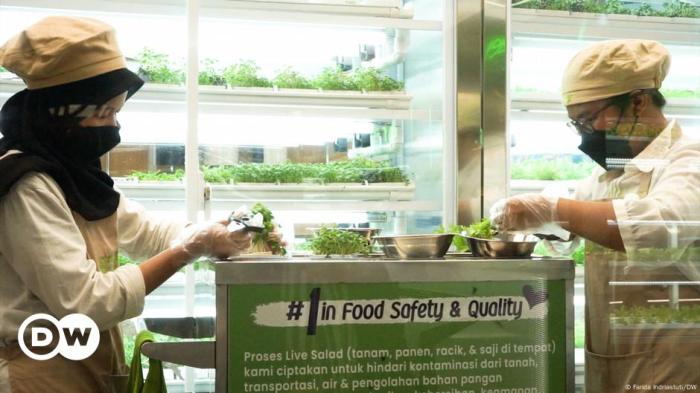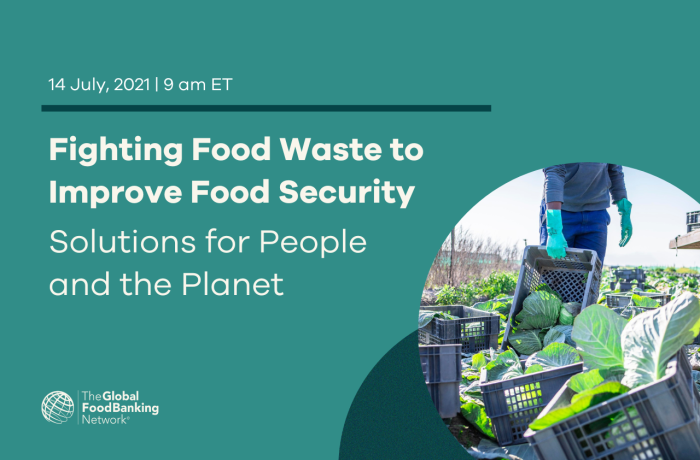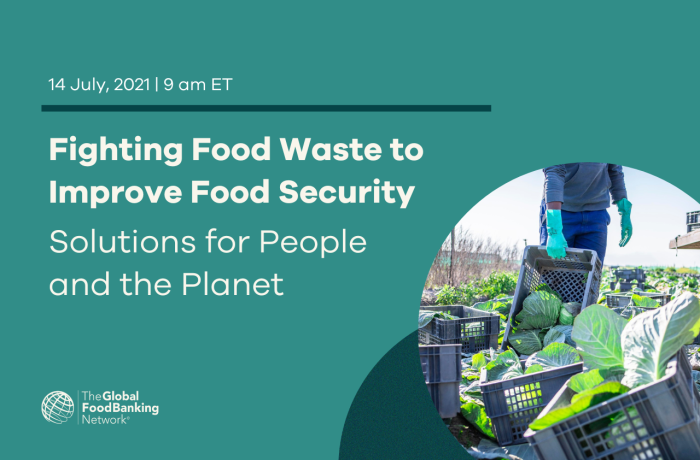Positive ventures sensors fight food wastage – Positive Ventures: Sensors Fight Food Wastage – Food waste is a global crisis, impacting the environment, economy, and food security. From overflowing grocery store shelves to discarded produce in our own kitchens, food waste is a pervasive issue with a significant impact on our planet.
However, a revolutionary solution is emerging: sensor technology. These tiny devices, strategically placed throughout the food supply chain, are transforming how we manage food, offering real-time insights into its condition and extending its shelf life.
Sensors are revolutionizing the fight against food waste by providing crucial data on factors like temperature, humidity, and ripeness. This information empowers businesses to optimize storage conditions, prevent spoilage, and ensure that food reaches its destination in peak condition.
By monitoring food in real-time, sensors are enabling a more efficient and sustainable food system, minimizing waste and maximizing resource utilization.
The Problem of Food Waste

Food waste is a significant global issue with far-reaching consequences for our environment, economy, and society. It is the result of a complex interplay of factors, including inefficient food supply chains, consumer behavior, and a lack of awareness about the true cost of food waste.
The Global Scale of Food Waste
Food waste occurs at every stage of the food supply chain, from farm to fork. Globally, an estimated one-third of all food produced for human consumption is wasted, amounting to approximately 1.3 billion tonnes per year. This represents a colossal loss of resources, including water, land, energy, and labor.
Environmental Impacts of Food Waste
Food waste has a significant impact on the environment. The production, transportation, and disposal of wasted food contribute to greenhouse gas emissions, land degradation, and water pollution. The decomposition of food in landfills releases methane, a potent greenhouse gas, which further exacerbates climate change.
Economic Impacts of Food Waste
Food waste also carries significant economic costs. In developed countries, food waste represents a considerable portion of household expenses. In developing countries, food waste can lead to food insecurity and malnutrition, especially for vulnerable populations.
Inefficient Food Supply Chains
Inefficient food supply chains play a significant role in food waste. This includes issues such as:
- Overproduction and surplus due to market fluctuations and unpredictable demand.
- Poor storage and transportation infrastructure, leading to spoilage and damage.
- Lack of coordination between producers, retailers, and consumers.
Consumer Behavior
Consumer behavior is another key factor contributing to food waste. This includes:
- Purchasing more food than needed, leading to spoilage.
- Disregarding best-before dates and discarding perfectly edible food.
- Lack of awareness about proper food storage and handling techniques.
Food Waste in Different Sectors
Food waste occurs across various sectors, including retail, agriculture, and households.
Retail Food Waste
Retailers contribute significantly to food waste due to:
- Strict cosmetic standards for fruits and vegetables, leading to rejection of perfectly edible produce.
- Overstocking and inadequate inventory management.
- Limited shelf space for products nearing their expiry dates.
Agricultural Food Waste
Food waste in agriculture is often attributed to:
- Poor harvesting practices and losses during transportation.
- Unfavorable weather conditions and pests.
- Lack of access to markets and storage facilities.
Household Food Waste
Households are responsible for a considerable portion of food waste, often due to:
- Overbuying and impulsive purchases.
- Improper food storage and handling.
- Limited knowledge about food preservation techniques.
The Potential of Sensors in Food Waste Reduction: Positive Ventures Sensors Fight Food Wastage
Sensors are playing an increasingly vital role in the fight against food waste. By providing real-time data on food conditions, sensors can help us optimize storage, prevent spoilage, and improve supply chain efficiency.
Types of Sensors Used in Food Storage and Transportation
Sensors are crucial for monitoring food conditions throughout the supply chain, from farm to fork. They can provide valuable insights into temperature, humidity, and ripeness, helping us make informed decisions to reduce food waste.
- Temperature Sensors:These sensors are essential for maintaining optimal storage conditions. They can monitor the temperature of food products, ensuring they remain within safe ranges to prevent spoilage. For example, a temperature sensor in a refrigerator can alert us if the temperature rises above a certain threshold, allowing us to take corrective action before food spoils.
- Humidity Sensors:Humidity levels can significantly impact food quality and shelf life. Humidity sensors monitor the moisture content of the surrounding air, helping us maintain optimal conditions for storage. For example, a humidity sensor in a fruit storage facility can help us regulate humidity levels to prevent the fruit from drying out or becoming overly moist.
- Ripeness Sensors:These sensors measure the ripeness of fruits and vegetables, helping us determine the optimal time for harvesting and distribution. Ripeness sensors can use various technologies, such as infrared or optical sensors, to measure factors like sugar content, firmness, and color.
For example, a ripeness sensor in a strawberry farm can help farmers determine when the strawberries are ripe enough for picking, ensuring optimal quality and reducing waste due to overripe or underripe fruit.
- RFID Sensors:Radio Frequency Identification (RFID) tags are small electronic devices that can be attached to food products. They emit a unique signal that can be read by RFID readers, allowing us to track the location and condition of food items throughout the supply chain.
This information can be used to optimize inventory management, reduce spoilage, and improve supply chain efficiency. For example, RFID tags can be used to track the movement of perishable goods in a warehouse, ensuring they are stored and transported at the appropriate temperature and humidity levels.
- Infrared Sensors:Infrared sensors detect heat radiation emitted by objects. They can be used to measure the temperature of food products and identify potential spoilage. For example, an infrared sensor in a food processing plant can detect hot spots in a batch of food, indicating potential spoilage and allowing for timely intervention.
- Optical Sensors:Optical sensors use light to detect changes in food properties, such as color, texture, and shape. These sensors can be used to monitor the ripeness of fruits and vegetables, detect spoilage, and assess the quality of processed foods. For example, an optical sensor in a supermarket can monitor the color of fruits and vegetables, alerting staff when products are approaching their expiration date.
Positive Ventures in Food Waste Reduction
The potential of sensors in combating food waste is not just a theoretical concept; it’s being realized by innovative companies and organizations around the world. These ventures are leveraging sensor technology to optimize supply chains, improve food storage, and empower consumers to make informed choices, ultimately leading to a more sustainable food system.
Successful Initiatives Using Sensors
Several successful initiatives have emerged that use sensor technology to tackle food waste. These initiatives are diverse in their approach, spanning from monitoring food storage conditions to tracking food transportation and even predicting food demand.
- Smart Refrigerators:Companies like Samsung and LG are incorporating sensors into their refrigerators to monitor temperature, humidity, and even the freshness of food. These sensors provide real-time data to the user, allowing them to optimize storage conditions and minimize spoilage.
For example, Samsung’s Family Hub refrigerator uses sensors to track the expiration dates of food items, alerting users when they are nearing their expiration date. This feature helps reduce food waste by encouraging consumers to use their food before it spoils.
- Food Waste Tracking Apps:Applications like Too Good To Go and Olio connect consumers with businesses that have surplus food. These apps use sensors and GPS technology to track the location and availability of food items, allowing consumers to purchase discounted food that would otherwise be wasted.
This initiative helps reduce food waste by ensuring that surplus food is redistributed instead of being thrown away.
- Smart Farms:Sensors are being integrated into agricultural practices to optimize crop yields and minimize waste. For example, sensors can monitor soil moisture, temperature, and nutrient levels, providing farmers with real-time data to adjust irrigation and fertilization schedules. This approach helps reduce food waste by maximizing crop yields and minimizing losses due to poor growing conditions.
Learn about more about the process of uk antitrust regulator reopens consultation microsoft activision blizzard deal in the field.
Case Studies of Sensor-Based Food Waste Reduction, Positive ventures sensors fight food wastage
Several companies and organizations have successfully implemented sensor-based solutions to reduce food waste across different sectors. These case studies demonstrate the effectiveness of sensor technology in tackling this global challenge.
- Winnow:This company provides AI-powered food waste reduction systems for commercial kitchens. Their system uses sensors to monitor food waste in real-time, providing insights into waste patterns and helping kitchens optimize their operations. Winnow’s technology has been implemented in over 2,000 kitchens worldwide, resulting in significant reductions in food waste.
For instance, a study by Winnow found that their technology helped a university dining hall reduce food waste by 30%.
- IBM Food Trust:This blockchain-based platform utilizes sensors and other technologies to track food products from farm to table. The platform provides transparency and traceability throughout the supply chain, enabling stakeholders to identify and address potential waste points. IBM Food Trust has been used to track the movement of produce, seafood, and other food products, helping to reduce waste and improve food safety.
- The Global FoodBanking Network:This organization works with food banks around the world to collect and distribute surplus food to those in need. They utilize sensors and other technologies to optimize the storage and transportation of food, ensuring that it is delivered safely and efficiently.
The Global FoodBanking Network has helped to reduce food waste by providing access to nutritious food for millions of people worldwide.
Impact of Sensor-Based Ventures on Food Waste Reduction
The use of sensors in food waste reduction initiatives has yielded significant positive impacts. These ventures have not only reduced food waste but have also contributed to food security and generated economic benefits.
- Reduced Food Waste:Sensors have been instrumental in reducing food waste at various stages of the food supply chain. By monitoring storage conditions, tracking food movement, and predicting demand, sensors help to minimize spoilage and ensure that food is used efficiently.
Studies have shown that sensor-based solutions can reduce food waste by up to 50% in some cases.
- Improved Food Security:Reducing food waste translates to increased food availability, which directly contributes to food security. By preventing food from being wasted, these ventures ensure that more food is available to feed the growing global population. This is particularly important in regions facing food shortages and malnutrition.
- Economic Benefits:Reducing food waste not only saves money on wasted food but also generates economic benefits for businesses and organizations. By optimizing operations, reducing waste, and improving efficiency, sensor-based solutions can lead to cost savings and increased profitability. Moreover, the development and implementation of sensor technologies create new job opportunities in the technology and food industries.
Technological Advancements in Sensor Technology

The fight against food waste is increasingly reliant on technological advancements, particularly in the realm of sensor technology. These innovations are revolutionizing how we monitor, track, and manage food throughout its journey, from farm to fork.
Smart Packaging
Smart packaging, equipped with sensors that monitor key parameters like temperature, humidity, and gas composition, provides real-time insights into the condition of food products. This data can be used to predict shelf life, identify potential spoilage, and optimize storage conditions.
Smart packaging empowers consumers to make informed decisions about the freshness of their food, reducing the likelihood of purchasing products that are nearing their expiration date.
- Time-Temperature Indicators (TTIs):These sensors change color or display a signal based on the cumulative exposure to temperature, providing a visual indication of the product’s freshness.
- Gas Sensors:These sensors detect the presence of gases released by food spoilage, such as ethylene or carbon dioxide, indicating potential deterioration.
- RFID Tags:Radio Frequency Identification (RFID) tags can be embedded in packaging to track product movement and provide real-time information on its location and condition.
AI-Powered Analysis
Artificial intelligence (AI) is transforming food waste reduction by enabling more sophisticated data analysis. AI algorithms can analyze vast amounts of sensor data, identifying patterns and trends that would be difficult for humans to discern. This allows for predictive models that can forecast potential food waste hotspots, optimize inventory management, and improve supply chain efficiency.
- Predictive Maintenance:AI algorithms can analyze sensor data from equipment, such as refrigeration units, to predict potential failures and schedule maintenance before they occur, preventing spoilage due to equipment malfunction.
- Demand Forecasting:AI can analyze historical sales data and external factors, such as weather patterns, to forecast demand more accurately, reducing overstocking and minimizing waste.
- Food Waste Detection:AI-powered vision systems can analyze images of food products to detect signs of spoilage, such as mold or discoloration, and flag them for removal before they reach consumers.
Blockchain Integration
Blockchain technology offers a secure and transparent platform for tracking food products throughout the supply chain. By recording data on a decentralized ledger, blockchain ensures the authenticity and traceability of food products, enhancing food safety and reducing the risk of fraud.
This can be particularly valuable in reducing food waste by enabling the identification of spoilage points and holding accountable those responsible for product quality.
- Traceability:Blockchain enables the tracking of food products from their origin to their final destination, allowing for the identification of any issues that may lead to spoilage.
- Transparency:The decentralized nature of blockchain ensures that all participants in the supply chain have access to the same information, fostering greater transparency and accountability.
- Data Integrity:Blockchain’s immutability ensures that data cannot be altered or tampered with, providing a reliable and verifiable record of food product history.
Future Directions and Opportunities

The fight against food waste is evolving rapidly, with sensor technology playing a pivotal role in this journey. As we look ahead, emerging trends and collaborative efforts promise to further enhance the impact of sensors in reducing food waste.
Emerging Trends in Sensor Technology for Food Waste Reduction
The application of sensor technology in food waste reduction is experiencing a surge in innovation. Here are some notable trends shaping the future:
- Smart Packaging:Sensors integrated into packaging can monitor real-time conditions like temperature, humidity, and gas levels, providing valuable insights into food freshness and potential spoilage. This data empowers consumers to make informed decisions about food consumption and helps retailers optimize inventory management.
- Internet of Things (IoT):The interconnectedness of sensors within the food supply chain, enabled by IoT, facilitates data sharing and real-time monitoring. This allows for proactive interventions, such as adjusting storage conditions or redirecting perishable goods, minimizing waste at various stages.
- Artificial Intelligence (AI):AI algorithms can analyze sensor data to predict food spoilage, optimize inventory levels, and identify patterns in food waste generation. This enables businesses to make data-driven decisions and implement targeted interventions for waste reduction.
- Bio-Sensors:Advancements in bio-sensors are paving the way for more sensitive and accurate detection of food spoilage. These sensors can identify specific biomarkers associated with microbial growth, providing early warning signals for potential food waste.
Collaboration for Sensor Adoption
The successful adoption of sensor technology for food waste reduction requires a multi-pronged approach involving collaboration between governments, businesses, and consumers.
- Government Incentives:Governments can play a crucial role by implementing policies and providing financial incentives to encourage the adoption of sensor technology by businesses. This could include tax breaks, grants, and subsidies for investments in sensor-based solutions.
- Industry Partnerships:Collaboration between businesses and technology providers is essential for developing and deploying effective sensor solutions. Partnerships can leverage expertise, resources, and market reach to accelerate the adoption of sensor technology.
- Consumer Awareness:Raising consumer awareness about the benefits of sensor technology and its role in reducing food waste is crucial. Educational campaigns, product labeling, and consumer-facing apps can empower consumers to make informed choices and contribute to waste reduction efforts.
Challenges and Opportunities for Future Advancements
The advancement of sensor technology for food waste reduction presents both challenges and opportunities:





